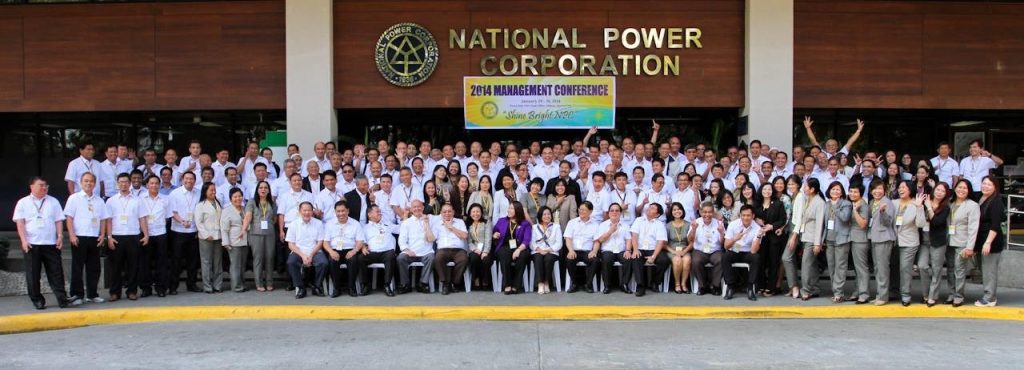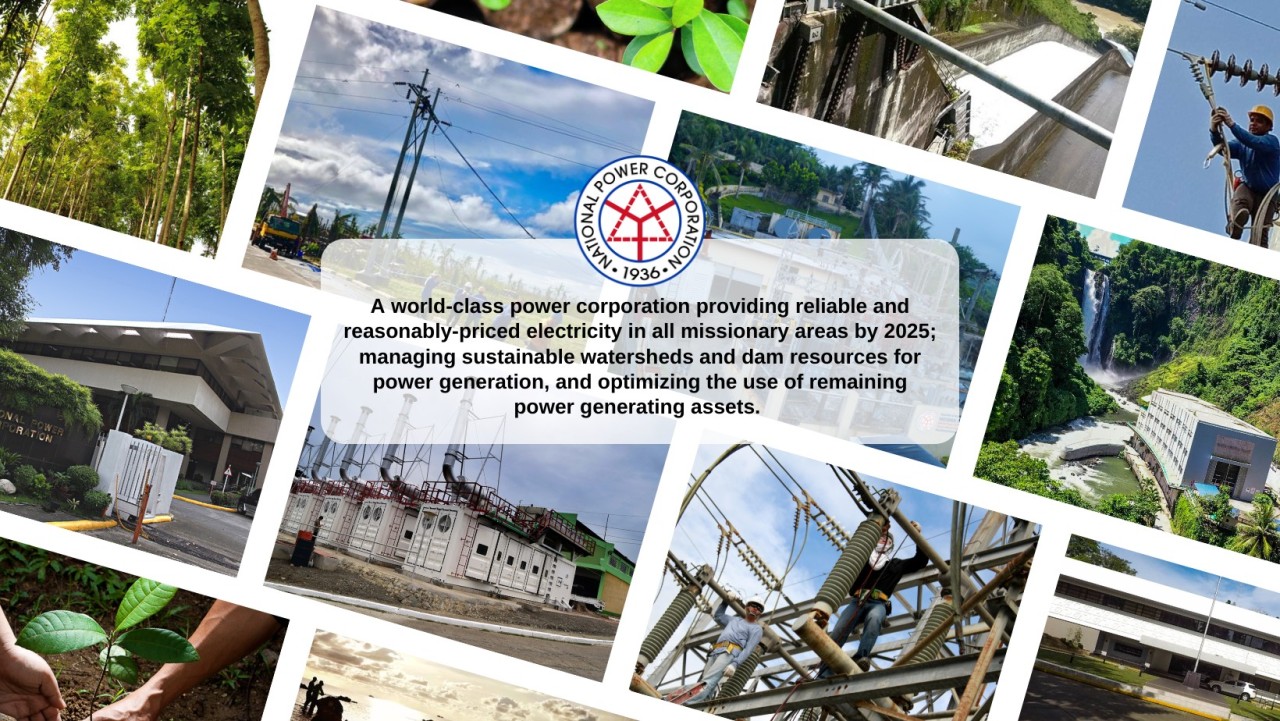The National Power Corporation (NAPOCOR) is one of the Philippines’ oldest government-owned and controlled corporations (GOCCs), with roots dating back to 1936. Under the Department of Energy (DOE), NAPOCOR provides electricity to remote areas, manages watersheds and dams, and operates major hydroelectric power plants in Mindanao.
For over eight decades, it has contributed to national electrification efforts, especially in off-grid locations where private companies rarely operate.
Why NAPOCOR Matters

NAPOCOR directly operates power generation facilities in off-grid areas rather than focusing solely on regulatory, financing, or asset management roles. Unlike other GOCCs tied to the energy sector, NAPOCOR’s primary mandate prioritizes social impact and national electrification over commercial profit.
While private power companies focus on profit-driven markets, NAPOCOR fulfills public service duties by reaching areas where commercial providers do not operate. Its work directly affects:
- Rural and island communities needing electricity.
- Hydroelectric power supply reliability in Mindanao.
- Watershed and environmental sustainability supporting power generation.
History
NAPOCOR was established through Commonwealth Act No. 120 in 1936 as a non-stock government corporation until it became a stock corporation wholly owned by the government under RA 2641 in 1960. Its charter was revised in 1971 through RA 6395, granting it a ₱50 billion authorized capital stock. In 2001, the Electric Power Industry Reform Act (EPIRA) reorganized the power industry into four sectors and created two new GOCCs as well.
Mandates and Functions
Under EPIRA, NAPOCOR continues to retain specific functions as a GOCC. Its focus lies in three main areas:
Missionary Electrification through SPUG
NAPOCOR energizes off-grid communities through the Small Power Utilities Group (SPUG). These are remote islands and municipalities where private sector power generation is not present. As of today:
- 272 SPUG power plants operate across 222 areas.
- These areas span 192 municipalities in 35 provinces across the country.
This service brings electricity to islands where connectivity to the national grid is unavailable.
Hydroelectric Power Plant Management
NAPOCOR operates two key hydroelectric facilities in Mindanao:
- Agus Hydroelectric Power Plant Complex: 6 cascading plants from Lake Lanao in Marawi City to Maria Cristina Falls in Iligan City.
- Pulangi IV Hydroelectric Power Plant: Located in Maramag, Bukidnon.
Together, these plants contribute over 1,000 megawatts to the Mindanao power grid.
Watershed and Dam Management
NAPOCOR is responsible for:
- Managing 11 watershed areas and 22 dams supporting power generation.
- Protecting and rehabilitating 485,199 hectares of watershed reservations.
- Monitoring dam integrity and safety.
These efforts directly support sustainable hydroelectric power generation.
But, the EPIRA law not only reorganized the industry but also categorized the services into four different sectors: generation, transmission, distribution, and supply. It also led to the formation of two other GOCCs:
- Power Sector Assets and Liabilities Management Corporation (PSALM): Handles NPC’s financial assets, liabilities, and privatization processes.
- National Transmission Corporation (TransCo): Manages transmission functions, high-voltage facilities, and grid interconnections.
Post-EPIRA, NAPOCOR retained missionary electrification, watershed management, and specific generation assets’ operations as its key responsibilities.
Vision (2030)
“By 2030, become the leading corporation providing equitable access to reliable, clean, and affordable electricity through renewable energy, resilient Infrastructure, and innovations, contributing to total electrification and sustainable development.”
Mission
“National Power Corporation committed to
- Provide reliable power generation and its associated power delivery systems, and adopt renewable and indigenous sources of energy,
- Ensure total electrification of missionary areas and encourage private sector participation:
- Protect and rehabilitate watersheds and ensure safe dam operations
- Operate efficiently the Agus and Pulangi hydroelectric power plants, and
- Adopt disaster resilient systems, Innovations, and inclusive governance responsive to customer needs while ensuring financial sustainability”
Core Values
Their operation is guided by the following values:
- Professionalism
- Integrity
- Service
- Innovation
These core values guide all operations and customer interactions, aiming to provide reliable services while maintaining fiscal responsibility.
Logo
The NAPOCOR logo has evolved over the decades to mirror the organization’s changing roles and identity. Originally, it featured the Philippine seal as required by law, but in 1947, they introduced a new emblem incorporating national colors and a transmission line symbol, with laurel leaves and the acronym “NAPOCOR” displayed prominently. In 1979, the logo was updated to show a Wye-Delta symbol with three horizontal lines, representing power transmission and the three major Philippine islands: Luzon, Visayas, and Mindanao. After the EPIRA in 2001, NAPOCOR’s functions shifted, prompting a logo revision in 2003 where the three lines were removed to reflect its focus on generation and missionary electrification only. The current logo maintains the Wye-Delta symbol, encircled by the organization’s name and founding year, emphasizing its history and streamlined mandate.
Organizational Structure
The organizational structure of the NAPOCOR is arranged into key leadership offices and specialized groups, as outlined in its 2012 approved table of organization. At the top is the National Power Board, supported by the NP Board Staff and the Corporate Secretary. The Office of the President and Chief Executive Officer (CEO) oversees major operational divisions: Power Engineering Group, Corporate Affairs Group, Legal Counsel, and the Administration & Finance Group. Under these, there are dedicated departments and services including the Internal Audit Department, Watershed Management Department, Dams Management Department, Small Power Utilities Group (SPUG), Resource Management Service, and Mindanao Generation Group. This structure reflects a mix of governance, finance, legal, technical, and operational teams, totaling 2,455 personnel as confirmed under NP Board Resolution No. 2012-029.
Organizational Impact
NAPOCOR’s contributions span multiple key areas:
- Energy Access: Power supply in missionary areas and Mindanao’s main grid.
- Renewable Integration: Adopting renewable energy technologies in isolated communities.
- Asset Management: Efficient operation of generation assets through Agus and Pulangi plants.
- Watershed Protection: Maintaining dam and watershed health for long-term energy sustainability.
- Disaster Resilience: Building systems and infrastructures capable of withstanding natural calamities.
- Good Governance: Upholding transparency, fiscal prudence, and continuous process improvement.
How NAPOCOR Relates to the Broader Energy Sector
Under the DOE, NAPOCOR aligns with national energy goals focusing on renewable energy, total electrification, and sustainable development. It works alongside:
- PSALM: For asset management and privatization.
- TransCo: For national transmission services.
By balancing public service with financial sustainability, NAPOCOR contributes to building a stable and inclusive Philippine energy landscape.
Video: NAPOCOR to Power Rural Philippines with Smart, Sustainable Energy
The NAPOCOR, or “Pambansang Korporasyon sa Elektrisidad,” is the government agency tasked with bringing electricity to rural and off-grid communities across the Philippines. Watch this video below and see how NAPOCOR also partners with innovators like SunSmart to introduce smart renewable hybrid systems as a practical solution for clean, consistent, and accessible power, which aligns with the Philippines’ efforts toward the 2030 Sustainable Development Goals (SDG).
Contact Information
For inquiries or other concerns, you may reach out to NAPOCOR via the following:
National Power Corporation (NAPOCOR)
- Address: Gabriel Y. Itchon Building, Senator Miriam P. Defensor-Santiago Avenue (formerly BIR Road) corner Quezon Avenue, Diliman, 1100 Quezon City
- Tel: (632) 8921-3541 | TeleFax: (632) 8921-2468
- Email: corpcomm@napocor.gov.ph
- Website: www.napocor.gov.ph
